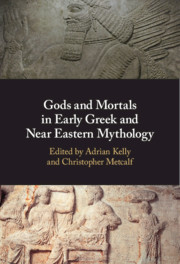Book contents
Bibliography
Published online by Cambridge University Press: 27 March 2021
Summary

- Type
- Chapter
- Information
- Gods and Mortals in Early Greek and Near Eastern Mythology , pp. 292 - 339Publisher: Cambridge University PressPrint publication year: 2021

